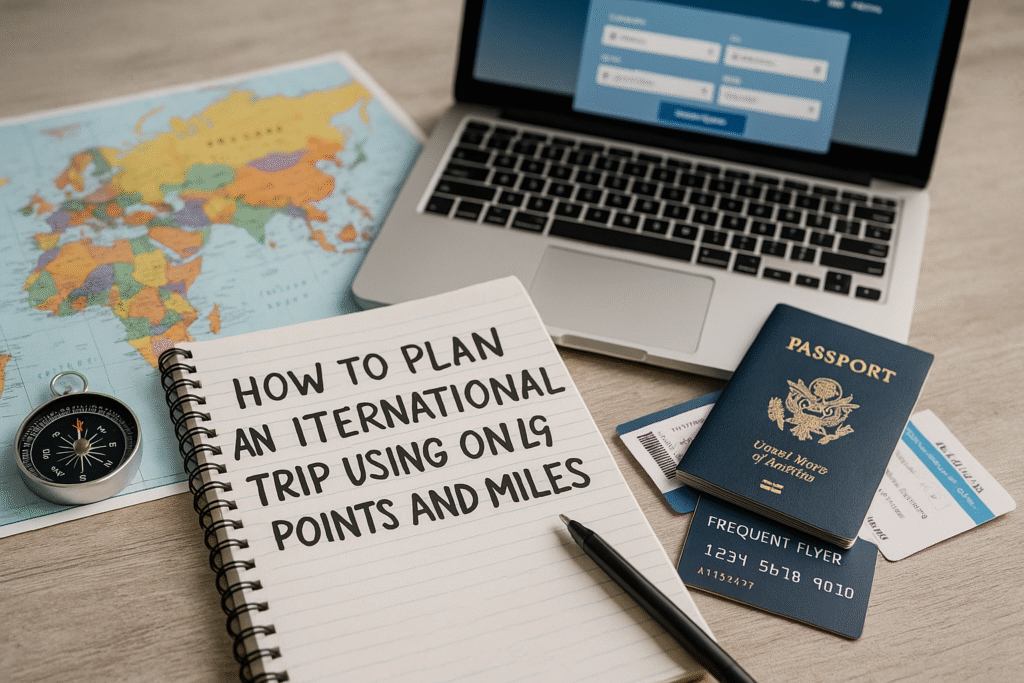When planning an international trip, travel insurance is one of the most overlooked — yet most critical — parts of your preparation. A single medical emergency, missed flight, or lost bag could turn your dream vacation into a costly nightmare. That’s why knowing how to choose the best travel insurance for international trips is essential for any smart traveler.
This article is your complete guide to understanding what travel insurance is, what it should cover, how much it costs, and how to find the right policy for your needs and destination.
Why Travel Insurance Is a Must for International Trips
Unlike domestic travel, going abroad exposes you to additional risks:
- Medical care may not be free — even for emergencies
- Many countries require proof of coverage at the border
- Airlines and hotels may not fully refund delays or cancellations
- Travel mishaps can happen with baggage, documents, or injuries
For just a few dollars per day, travel insurance gives you peace of mind and financial protection.
Real-Life Examples
- A hospital stay in the U.S. can cost over $5,000 per day
- Emergency evacuation from a ski resort in Europe can exceed US$25,000
- Missing a connecting flight due to weather might cost you hundreds in rebooking fees
With the right policy, these costs can be fully covered.
What Does Travel Insurance Typically Cover?
Not all policies are created equal, but a good international plan should include:
1. Emergency Medical Coverage
Covers:
- Doctor visits
- Hospital stays
- Surgeries
- Medications
- Emergency dental
Recommended minimum: US$100,000 in coverage (or more for remote destinations)
2. Emergency Medical Evacuation
Covers:
- Transport to the nearest adequate facility
- Medical evacuation back to your home country
This is crucial for adventure travelers, cruise passengers, or trips to countries with limited infrastructure.
Recommended minimum: US$250,000 or more
3. Trip Cancellation
Reimburses prepaid and non-refundable expenses (like flights and hotels) if your trip is canceled for a covered reason:
- Illness
- Injury
- Family emergency
- Job loss
- Natural disasters
Make sure the policy states specific covered reasons.
4. Trip Interruption
Covers unexpected interruptions once your trip begins (e.g., a family emergency at home). It can pay for:
- Last-minute return flights
- Unused portions of your bookings
- Hotel rebookings
5. Travel Delay
Covers expenses if your flight is delayed more than a set number of hours:
- Meals
- Hotel stays
- Transport
Check for minimum delay periods (usually 6–12 hours) and per-day limits.
6. Lost, Damaged, or Delayed Baggage
Reimburses:
- Lost or stolen luggage
- Delayed baggage (e.g., clothes or toiletries needed)
- Damaged suitcases
Typical coverage: US$500–US$2,500 total
7. Accidental Death or Dismemberment (AD&D)
Pays a lump sum in the event of accidental death or permanent disability during travel.
Optional Add-Ons and Special Coverage
Depending on your trip, you might consider:
- Cancel for Any Reason (CFAR): Offers partial refund for cancellations beyond standard covered reasons
- Adventure Sports Coverage: For activities like skiing, scuba diving, or paragliding
- Rental Car Coverage: Covers collision damage, often cheaper than what the rental company offers
- Political or Natural Disaster Evacuation: For trips to unstable regions
What Travel Insurance Doesn’t Cover
Common exclusions include:
- Pre-existing medical conditions (unless waived or covered)
- Injuries from reckless behavior (e.g., intoxication)
- Travel to countries under official travel advisories
- Missed flights due to personal error (e.g., late arrival at the airport)
- Routine or elective medical procedures
Always read the policy’s exclusions carefully.
How to Compare Travel Insurance Plans
Use trusted comparison platforms like:
- Squaremouth
- InsureMyTrip
- TravelInsurance.com
- VisitorsCoverage
These tools allow you to filter by:
- Trip length
- Traveler age
- Destination
- Activities
- Coverage amount
- COVID-19 support
Top Travel Insurance Providers (as of 2025)
| Provider | Strengths |
|---|---|
| SafetyWing | Great for digital nomads and long-term travel |
| World Nomads | Ideal for adventure and backpacking travel |
| Allianz Travel | Strong reputation, easy to file claims |
| IMG Global | High medical and evacuation limits |
| AXA Assistance USA | Competitive pricing, solid COVID coverage |
How Much Does Travel Insurance Cost?
Travel insurance typically costs 4% to 10% of your total trip cost. Factors include:
- Your age
- Trip length
- Destination
- Coverage limits
- Add-ons (like CFAR)
Example:
For a 30-year-old traveler on a 2-week trip to Europe costing US$3,000:
- Basic plan: ~US$120
- Comprehensive plan with CFAR: ~US$250
Tip:
Don’t just pick the cheapest plan — focus on value and coverage.
Does Your Credit Card Include Travel Insurance?
Many travel cards offer free insurance if you pay for your trip with that card. Examples:
- Chase Sapphire Preferred/Reserve
- American Express Platinum
- Visa Infinite and Mastercard Black cards in Brazil
- Some Banco do Brasil or Bradesco travel cards
Included Benefits (may vary):
- Trip cancellation/interruption
- Baggage loss or delay
- Travel accident insurance
- Emergency assistance
Check your card’s benefit guide for exact terms and activation requirements.
How to Read the Policy (and What to Look For)
Key things to review before purchasing:
- Coverage limits (is it enough?)
- Deductibles (how much do you pay out of pocket?)
- Claim procedures (is it all digital or paper-based?)
- Reimbursement time (some are faster than others)
- 24/7 support availability (via chat, phone, or app)
- COVID-19 inclusion (still important in some regions)
When Should You Buy Travel Insurance?
Buy as soon as you book your trip.
Some coverage (like trip cancellation or CFAR) only applies if the policy is purchased within 7–14 days of your first payment.
Last-minute insurance is still better than none, but it may exclude certain protections.
What to Do if You Need to Make a Claim
Step-by-step:
- Contact the provider immediately (some require notice within 24 hours)
- Save receipts and documentation (flights, hotel invoices, medical records)
- Submit your claim online or via email
- Track your claim status regularly
- Follow up if delays occur (some require a second contact)
Tip: Take photos of everything and back them up in the cloud.
Real-Life Case Study: Why Travel Insurance Saved a Trip
Carlos, a traveler from São Paulo, flew to Thailand for two weeks. On day four, he got food poisoning so severe it required hospitalization. His total bill was over US$4,500 — which would have wiped out his vacation budget.
Luckily, he had bought a US$150 policy from World Nomads with $100,000 medical coverage.
- He filed the claim with receipts
- The provider paid the hospital directly
- His out-of-pocket cost: US$0
- He recovered, finished the trip, and later shared his story online
Without insurance, Carlos would have gone into debt for a routine illness abroad.
Final Thoughts: Peace of Mind Is Priceless
Learning how to choose the best travel insurance for international trips is one of the most valuable skills for any traveler.
It’s not just about protecting money — it’s about protecting your freedom to travel without fear.
With the right policy, you can board your flight with confidence, knowing you’re covered from the moment you leave home until you safely return.
Elaine A. da Silva is a Brazilian travel and finance enthusiast, best known as the creator of the blog Dica das Milhas. With a strong background in personal finance and a passion for exploring smart travel strategies, she specializes in simplifying the world of airline miles and travel rewards for everyday people. Through her blog, Elaine shares practical tips, insider knowledge, and step-by-step guides to help readers save money and travel more efficiently using loyalty programs and credit card points.







